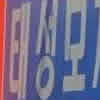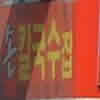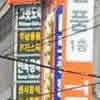Basics - Lesson 3 - Use of Consonants and Vowels Lesson
By Learn Korean Admin - 05/04/2025
<< Previous Lesson
Next Lesson >>
<< Previous Lesson Next Lesson >>
Donate just £2 to use to help keep us FREE.


Vowels in the korean languages may be attached to the left, right or beneath each other in order to form a word, the following are examples of their use : -
| 가 = ka | 거 = keo | 겨 = kyeo |
| 갸 = kya | 기 = ki | 고 = ko |
| 바 = pa | 버 = peo | 부 = pu |
| 뵤 = pyo | 지 = chi | 저 = cheo |
| 즈 = chu | 조 = cho | 마 = ma |
| 머 = meo | 무 = mo | 나 = na |
| 너 = neo | 이 = i | 야 = ya |
| 디 = ti | 고 = ko | 댜 = tya |
| 요 = yo | 오 = o | 도 = to |
| 드 = tu | 두 = too | 그 = ku |
When constructing a word, you must add a mixture of consonants and vowels, beginning with the consonant at the beginning of the word. In some cases, there is no need to use a consonant at the beginning in which case ㅇ (null character) is used.
| ㅇ | + | ㅏ | = | 아 | a | ||
| ㄹ | + | ㅡ | + | ㅁ | = | 름 | rum |
| ㄱ | + | ㅏ | + | ㅁ | = | 감 | kam |
| ㄲ | + | ㅜ | + | ㅇ | = | 꿍 | kkoong |
| ㅇ | + | ㅗ | + | ㅅ | = | 옷 | ot |
| ㅇ | + | ㅓ | + | ㅂㅅ | = | 없 | eop |
| ㄲ | + | ㅗ | + | ㅊ | = | 꽃 | kkot |
| ㅎ | + | ㅏ | + | ㄴ | = | 한 | han |
| ㄱ | + | ㅡ | + | ㄱ | = | 극 | guk |
More on constructing words
A syllable that consists of a consonant and a "vertical vowel" is written with the consonant on the left and the vowel on the right
ㄴ + ㅏ = 나
n + a = na
A syllable that consists of a consonant and a "horizontal vowel" is written with the consonant on top and the vowel underneath:
ㅁ + ㅗ = 모
m + o = mo
If a syllable has a consonant, vowel, and consonant, the final consonant, called patch'im (meaning "supporting floor" in Korean) goes to the bottom -- or floor -- of that syllable.
ㅁ + ㅏ + ㄴ = 만
m + a + n = man
<< Previous Lesson Next Lesson >>
Donate just £2 to use to help keep us FREE.


 Learn-Korean
Learn-Korean









